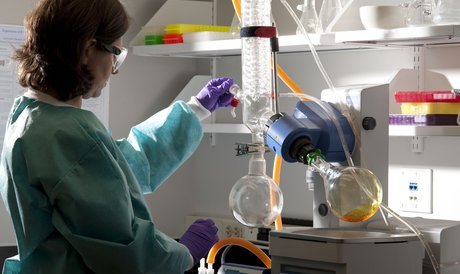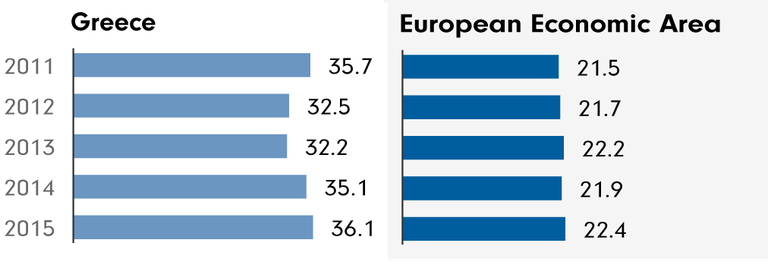
Greece
The emergence of bacteria that cause infections in humans which are resistant to treatment with antibiotics has become a global public health concern.
Infections by multi-resistant germs are estimated to kill around 25,000 people in the EU every year, with some experts estimating that this number will increase dramatically over the coming decades.
MRSA prevalence
Percent of hospital Staphylococcus aureus isolates that are resistant to methicillin

Source: ECDC
But the situation between each member states varies hugely. Some countries have strict rules around antibiotic consumption and some don’t. The EU bodies responsible for addressing the problem recognise that there is no one-size-fits-all solution. This is why it is important to understand the situation in individual countries.
Antibiotic resistance in Greece
Greece is a Mediterranean country of thousands of islands and around 11 million people. Greece also has almost 25 million sheep – famous for making feta cheese.
In 2016, Greeks were the biggest consumers of antibiotics outside hospitals with 36 daily doses of antibiotics per 1,000 people per day, compared to an EU average of 22.
Antibiotic consumption in humans
Daily doses per 1000 inhabitants per day

Source: ECDC
In 2015, a joint report by the European Food Safety Authority, the European Medicines Agency and the European Centre for Disease Prevention and Control said that in 2012, Greece had the lowest levels of Salmonella infections resistant to treatment with antibiotics in the EU, at zero per cent resistance. However, in Greece pneumonia infections called K. pneumoniae were found to be the most resistant in the EU to treatment with antibiotics called carbapenems – 60.5 per cent of infections were resistant to treatment. Greece was also among the countries which consumed the most carbapenems.
And when almost half the EU countries did not report any E. Coli infections that were resistant to treatment with carbapenems, Greece was one of only two countries with a carbapenem-resistant E. coli prevalence above one per cent.
There is a significant lack of data regarding livestock consumption of antibiotics in Greece. In their most recent reports into the issue, both the EMA and the ECDC do not include information for Greece.
Hospital infections
The ECDC also records healthcare associated infection (HAI) prevalence in European hospitals. This data shows what percentage of hospital patients have an HAI – a large proportion of these infections are preventable, and are caused by poor hygiene.The European average for HAI prevalence was 6.12%. In Greece, this number was above the average at 9%.
The latest ECDC data on hospital indicators associated with antibiotic use and resistance looked at indicators like alcohol hand rub and the proportion of single rooms in each hospital.
These indicators are important because they are measures that help to keep the rate of hospital acquired infections low, which helps to counter resistance – because the fewer infections patients acquire, the fewer antibiotics are used, and the less resistance can develop.
Single rooms are important because they can be used to isolate patients who have infections, preventing the infection from spreading. The amount of alcohol hand rub used indicates how well hospital staff are disinfecting their hands and following hygiene procedures – the more hand rub used, the less chance infections have of spreading.
In 2011-12, Greece had one of the highest rates in Europe of alcohol hand rub consumption, with 55.08 litres of alcohol hand rub used per 1,000 patient days. The European average was 25.64 litres. Only Sweden and Denmark used more alcohol hand rub than Greece.
When it comes to the number of single room beds as a percentage of total hospital beds, Greece has the second lowest proportion of all the countries in Europe. Just 2.86 per cent of hospital beds in Greece are in a single room, compared to a European average of 15.29 per cent and a high of 51.58 per cent in France.
The ECDC report also looked at the number of infection doctors and nurses at hospitals in each country. The report found that Greece had a below average number of both infection doctors and nurses. In Greece, there were 0.84 infection nurses per 250 beds compared to a European average of 0.97, and there were 0.34 infection doctors per 250 beds compared to a European average of 0.38.


